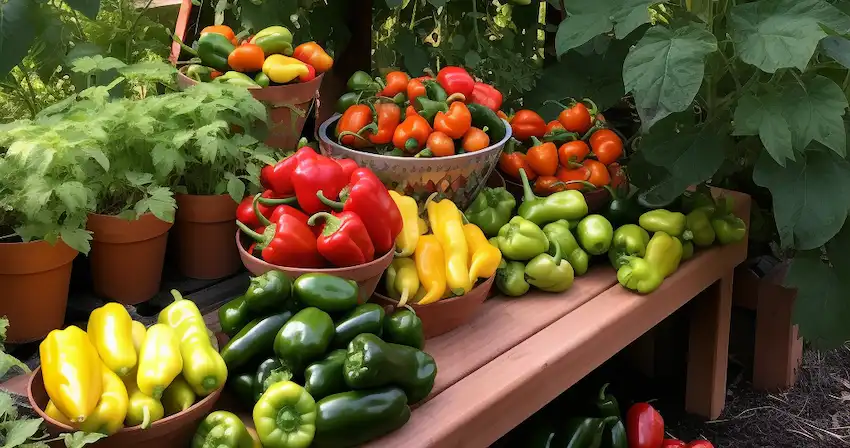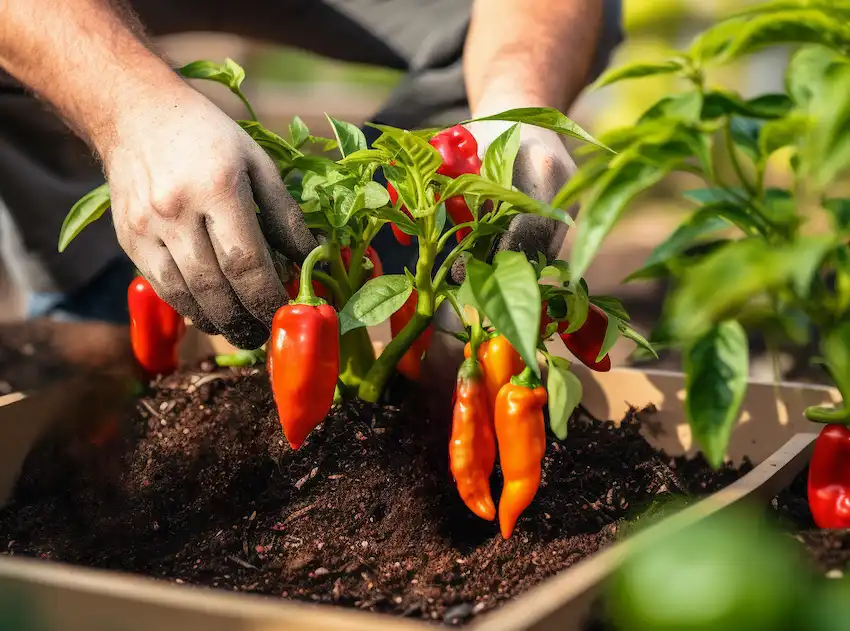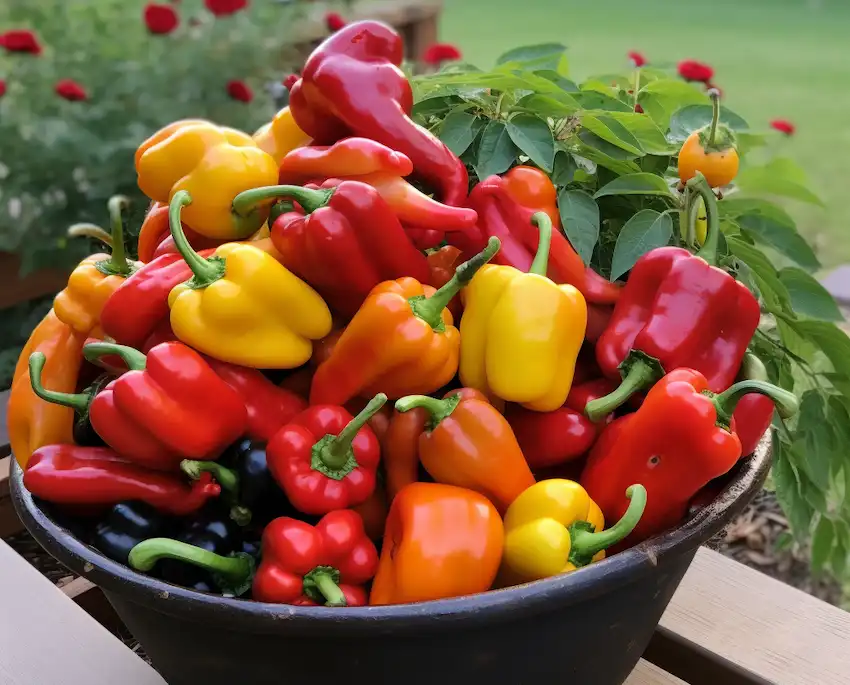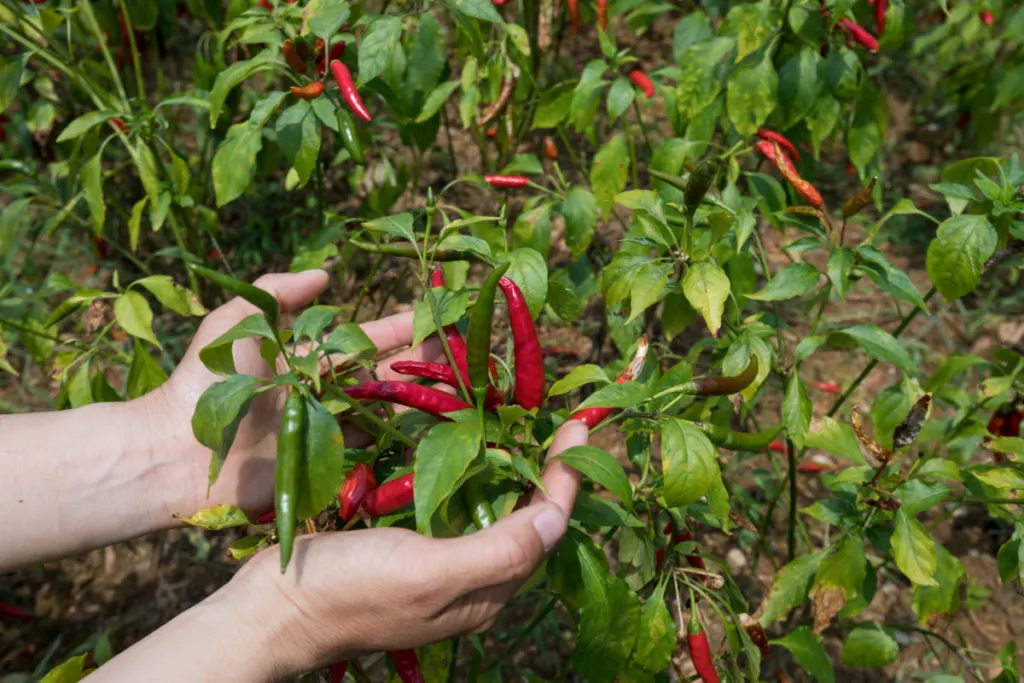
Peppers are a delightful addition to any kitchen. Whether you prefer the sweet crunch of bell peppers or the fiery kick of chili peppers, growing your own at home can be a rewarding experience. Not only do homegrown peppers taste better than store-bought ones, but they also allow you to explore unique varieties that may not be easily available. In this article, we will share some simple tips to help you successfully grow peppers at home and achieve an abundant harvest.
1. Choose the Right Pepper Varieties

Before you begin planting, it’s important to select pepper varieties that suit your preferences and growing conditions. Here are some popular options:
- Bell peppers: Enjoy the sweet and crisp flesh of green, red, yellow, or orange bell peppers.
- Jalapeños: Add a kick to your dishes with these medium-heat peppers.
- Habaneros: Crave extreme heat? These fiery peppers are for you.
- Poblano: Mildly spicy and great for stuffing, poblano peppers are versatile.
- Banana peppers: Perfect for pickling or slicing into salads, these mild and tangy peppers are a treat.
2. Provide Plenty of Sunlight
Peppers thrive in warm and sunny conditions. Make sure your pepper plants receive at least 6-8 hours of direct sunlight daily. If you’re growing them indoors or in a less sunny location, consider using grow lights to supplement their light needs.
3. Prepare Well-Drained Soil
Peppers prefer well-drained soil that is rich in organic matter. Enhance the fertility and drainage of the soil by adding compost or aged manure. Aim for a slightly acidic to neutral soil pH, around 6.0-7.0, for optimal growth.
4. Start Seeds Indoors
For an early start, begin growing pepper seeds indoors several weeks before the last expected frost date in your area. Use seed trays or small pots filled with seed-starting mix. Plant the seeds about ¼ inch deep and keep them consistently moist until they germinate. Once the seedlings have two sets of true leaves, transplant them into larger pots before moving them to the garden.
5. Transplant with Care
When transplanting your pepper seedlings into the garden, ensure the soil temperature is consistently above 60°F (15°C). Plant them at least 18 inches apart to allow for proper air circulation and growth. Water them gently after transplanting to help them settle into their new home.

6. Watering and Feeding
Peppers require regular watering, especially during hot and dry periods. However, they don’t like soggy soil, so make sure the soil is consistently moist but not waterlogged. Mulching around the base of the plants can help retain soil moisture.
Fertilize your pepper plants with a balanced, all-purpose fertilizer every 3-4 weeks or as recommended on the product label. Avoid over-fertilizing, as it can result in excessive foliage growth at the expense of fruit production.
7. Prune and Support
Pruning pepper plants can promote better air circulation and higher yields. Pinch off the small shoots, called suckers, that develop at the base of the plant. Staking or caging your pepper plants will support their growth and prevent the branches from breaking under the weight of the fruit.
8. Manage Pests and Diseases
Stay vigilant for common pests like aphids, spider mites, and pepper hornworms. Control these pests naturally with neem oil or insecticidal soap. Additionally, diseases like bacterial leaf spot and fungal issues can affect pepper plants, so practice good garden hygiene and avoid overhead watering to prevent these problems.
9. Harvesting Peppers
Peppers can be harvested at various stages of maturity, depending on your preference. Green bell peppers are typically picked when they are still green, but they will turn red, yellow, or orange if left to mature further. Hot peppers like jalapeños and habaneros can be picked green or allowed to ripen to their desired level of heat.
Use sharp scissors or pruning shears to cut the peppers from the plant to avoid damaging the stems.

Growing peppers at home can be a fulfilling and flavorful endeavor. By following these simple tips, you can enjoy a bountiful harvest of these versatile and delicious vegetables. Whether you prefer mild or spicy peppers, growing your own varieties will surely add flavor and flair to your culinary adventures. So, roll up your sleeves, grab your gardening tools, and start growing your own peppers for a truly abundant production.





